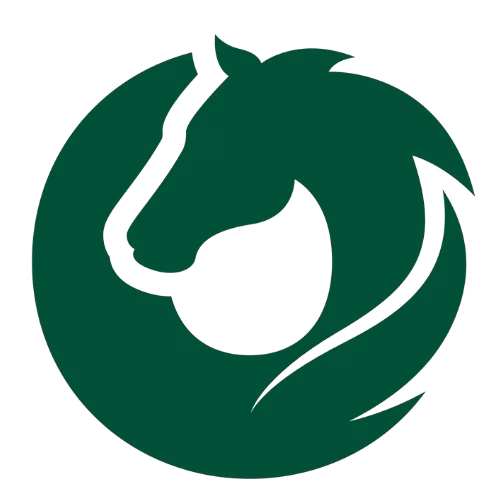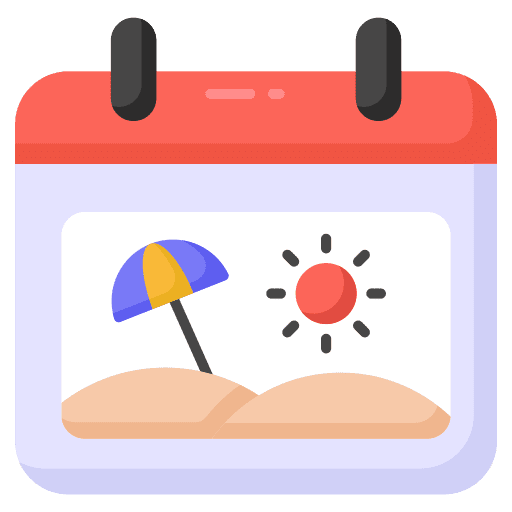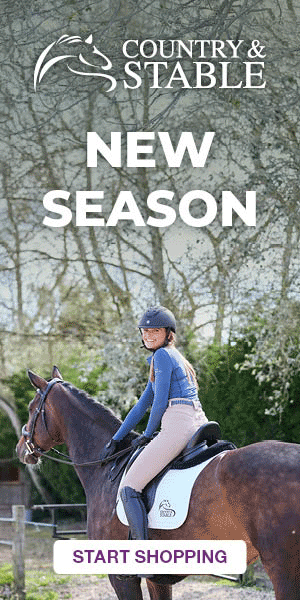Important facts about horses’ teeth
Equine Teeth Are Remarkably Different From Human Teeth, With Adult Horses Possessing Between 36 and 44 Teeth Depending on Their Sex
Horse teeth are very different from ours. Adult horses usually have between 36 and 44 teeth, depending on their sex. Unlike humans, their teeth keep growing throughout their lives. As horses graze, this continuous wear and growth helps them chew tough grass, but it also means they need regular dental care.
Many owners don’t think about their horse’s teeth until there’s a problem. But dental issues can cause real discomfort. A horse might lose weight, struggle to eat, or behave differently when ridden.
One common problem is the development of sharp edges, which can cut into their cheeks and cause pain. Gaps between teeth (called diastemas) can trap food and lead to sore, inflamed gums.
That’s why vets recommend having your horse’s teeth checked at least once a year. With proper care, horses can stay comfortable and healthy well into their twenties. This guide explains the basics of looking after your horse’s dentition.
Understanding Horse Teeth Anatomy
Horses are herbivores and have teeth specially designed for grazing. Their unique dental structure plays a vital role in maintaining their overall health.
Types of Teeth: Incisors, Molars, Canines, and Wolf Teeth
Horses have four main types of teeth, each with a specific function:
- Incisors – These 12 front teeth (six on top, six on the bottom) help the horse bite grass and are also used during mutual grooming. They have deep roots and are more sensitive than many owners realise.
- Canines (tushes) – These small, pointed teeth grow between the front and back teeth. They usually appear in male horses around 4 to 5 years of age. Most mares don’t develop them.
- Premolars and molars (cheek teeth) – These 24 back teeth are closely packed and ridged, helping grind grass into smaller particles before swallowing.
- Wolf teeth – These are small, extra teeth located in front of the cheek teeth. They appear between 5 and 12 months of age. About 70% of horses have them. They serve little purpose and are often removed.
How Many Teeth Does a Horse Have?
Foals are born with about 24 deciduous teeth (baby teeth). As they grow, these are replaced with permanent teeth. Adult male horses usually have 40 to 44 teeth. Most mares have 36 to 40, as many do not develop canine teeth.
When all adult teeth have appeared and are in use, the horse is said to have a “full mouth”. This usually happens by the age of five.
Equine teeth chart overview
The modern standard for identifying equine teeth is the Triadan system. This numerical system divides the mouth into four quadrants:
- 100 series – right upper (maxillary) arcade
- 200 series – left upper arcade
- 300 series – left lower (mandibular) arcade
- 400 series – right lower arcade
Each tooth has a specific three-digit number. For example, the right upper first incisor would be tooth 101.
Furthermore, horses have hypsodont teeth, characterised by long crowns divided into two regions: the clinical crown (visible portion) and the reserve crown (underneath the gums). This unique structure allows the teeth to continuously erupt throughout the horse’s life, compensating for wear from constant grazing.
Understanding this complex dental anatomy helps explain why proper dental care is essential for maintaining your horse’s health and comfort.
Tooth Eruption and Ageing in Horses
Like humans, horses grow two sets of teeth. They begin with deciduous teeth (baby teeth), which are later replaced by adult teeth that continue to grow throughout life.
Tooth Eruption Patterns in Foals and Adults
Foals are usually born with their first teeth or develop them within a few days. A helpful rule to remember is “8-8-8”:
- Central incisors by 8 days
- Middle incisors by 8 weeks
- Corner incisors by 8 months
Cheek teeth generally come through in the first two weeks of life.
Permanent teeth begin to appear around 2½ years old. The full set is usually present by age five. Canines typically emerge between 4 and 5 years in males.
Using Teeth to Estimate a Horse’s Age
After age five, vets estimate a horse’s age by examining how the teeth wear. The cups—small dips on the biting surface—disappear in a set pattern:
- Central cups gone by age 6
- Middle cups by age 7
- Corner cups by age 8
Another age marker is the dental star, a yellow-brown mark that appears as the pulp cavity fills with secondary dentine. These begin to show on central incisors around 5 to 6 years of age.
Tooth Wear and Changes Over Time
As a horse gets older, the shape of its teeth changes. Young horses have wide, oval grinding surfaces. By 8 to 12 years old, these become rounded. Around age 15, they become triangular.
The front teeth also tilt more forward over time. In younger horses, these teeth stand almost upright. As the horse ages, the angle becomes steeper. Vets can use these changes to estimate age, especially in horses between 10 and 14 years old.
Routine Dental Care and Procedures
Caring for your horse’s teeth involves regular dental checks. Studies show that up to 70% of horses have dental problems that go unnoticed, making routine care essential.
Why Routine Dental Exams Are Essential
Most horses should have their teeth checked once a year. Younger horses (under 5) may need more frequent visits, and older horses (over 20) benefit from checks every six months.
These visits help catch problems early, reduce the chance of pain, and avoid high vet costs. They also make sure your horse chews well and stays comfortable.
What Is a Dental Float?
Floating is the process of filing down sharp edges on a horse’s teeth. These sharp points can develop naturally and may hurt the cheeks or tongue.
Vets use different tools to smooth out the teeth and make sure your horse can chew properly.
Importance of Sedation During Dental Work
While some horses cope well with restraint, others benefit from sedation. Sedation relaxes the horse’s head, cheeks, and tongue, making the procedure easier and safer.
It also prevents sudden movements that could cause injury. After sedation, it’s best to wait until your horse is fully awake before offering food.
Vet dental tools used in oral exams
Veterinarians utilise specialised equipment including:
- Dental speculum (gag) – holds the horse’s mouth open during examination
- Rasps/floats – manual or powered instruments with rough grinding surfaces
- Irrigation systems – remove food material and tooth debris
- Head stand/support – designed to support the horse’s head during examination
- Light source – essential for thorough visual examination
Common Dental Issues and Their Impact
If left untreated, dental issues can cause pain and lead to serious health problems. More than 60% of horses have issues beyond sharp points.
Sharp Enamel Points and Cheek Ulcers
Horses often develop sharp enamel points because the lower jaw is narrower than the upper. These can cause cuts and painful ulcers inside the mouth.
Most ulcers heal in a week after floating, but because teeth continue to erupt, these points return. That’s why annual care is necessary.
Diastema and Food Packing
A diastema is a gap between teeth where food can get trapped. Open diastemas have even spacing, while valve diastemas are wider at the gum and narrower at the top—making them more likely to trap food tightly.
Rotting food causes gum disease, which is painful. Though more common in older horses, young ones can have this problem too.
Behavioural Signs of Dental Discomfort
Watch for signs such as:
- Resisting the bit
- Tossing or tilting the head
- Shaking the head when ridden
- Rearing or bucking
- Mood changes
Some horses may not show any signs, even if in pain.
Behavioural Signs of Dental Discomfort
Watch for signs such as:
- Resisting the bit
- Tossing or tilting the head
- Shaking the head when ridden
- Rearing or bucking
- Mood changes
Behavioural Signs of Dental Discomfort
Watch for signs such as:
- Resisting the bit
- Tossing or tilting the head
- Shaking the head when ridden
- Rearing or bucking
- Mood changes
Some horses may not show any signs, even if in pain.
Impact on Horse Performance
Tooth pain can affect how a horse responds to the bit and bridle. Conditions like wave mouth or hooks can stop the jaw from moving properly. This can interfere with flexion and performance.
Even with advanced tools, prevention is key. Regular checks help maintain comfort and ability.
Conclusion
Dental health is vital but often overlooked in horses. Because their teeth continue to grow, regular care is needed throughout their life.
Routine checks—once a year, or twice a year for young and old horses—can prevent serious problems. Issues like sharp points, diastemas, and worn teeth affect chewing and riding comfort.
Watching for subtle changes in eating or behaviour can help you catch problems early. Good dental care supports digestion, reduces pain, and improves performance. With proper attention, your horse can stay happy, healthy, and active for years to come.

Welcome to Sell Your Horse, a platform dedicated to connecting equestrians with each other, making horse buying and selling easier and more transparent. With a focus on technology and community-building. My mission is to help like-minded equestrians find the right connections, share knowledge, and build a trusted equine network.







 Featured Listings
Featured Listings
 Adverts
Adverts
 Horses For Sale
Horses For Sale
 Tack & Equipment
Tack & Equipment
 Horseboxes & Trailers
Horseboxes & Trailers
 Equine Properties
Equine Properties
 4x4 Vehicles
4x4 Vehicles
 Horses For Loan
Horses For Loan
 Horses Wanted
Horses Wanted
 Stallions at Stud
Stallions at Stud
 Equine Services
Equine Services
 Riding Holidays
Riding Holidays

